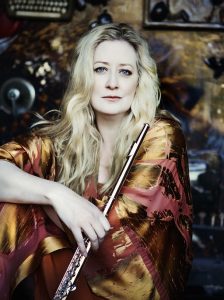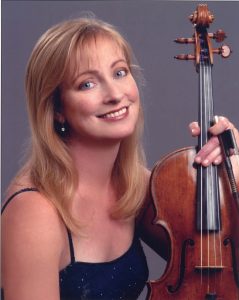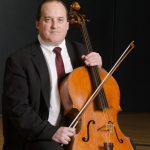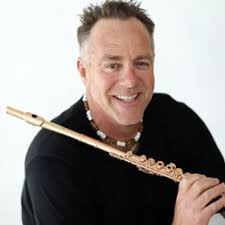Doing Much With Little
Saturday evening’s Mainly Mozart Spotlight Series at The Scripps Research Institute Auditorium presented (mostly) fabulous playing of (generally) lighter weight musical fare. The result was an extremely satisfying program that was on the short side (90 minutes.) No one left feeling cheated.
Mozart’s Flute Quartet No. 3 in C Major, K.285b, opened. Flute players adore Mozart’s output for their instrument with good reason. Relatively speaking, the flute lags far behind the piano, violin and even the cello in truly great repertoire. Consequently, any utterance of the great masters to their instrument is considered by flutists to be on the same level as the greatest repertoire. By and large, unfortunately, the flute pieces are not even close to the same level, but no matter. They shall be played!

Tara-Helen-OConnor [photo courtesy of Mainly Mozart]
What followed, however, was a deadly rendition of “Syrinx” composed by Tara Helen O’Connor–I mean Claude Debussy. To explain, 99% of the world’s flutists play this piece, and the vast majority of them seem to think that their unique ideas about rhythm, dynamics and articulations are much better than anything than that Debussy ever wrote. One of O’Connor’s teachers, Thomas Nyfenger, in fact, felt so intensely about the pervasive and dishonest mangling and “recomposing” of the piece that he developed a sarcastic and hilarious pedagogic lecture called “24 Variations on Syrinx,” in which he demonstrated twenty four of the most common butcherings of poor little “Syrinx.” O’Connor presented us with many of those perversions on Saturday night. Such a shame to do this to a composer who once told the grand old man of the flute, Marcel Moyse (who premiered the work), “Play the notes. I don’t need any collaborators!” O’Connor was nonetheless capable of delivering a strongly atmospheric performance. Too bad it wasn’t Debussy’s piece. It would have been better than O’Connor’s, which was pretty good, nonetheless.
The next ditty, the Duo for Flute and Viola in C minor, Op.5, No.3 by François Devienne (1759-1803) was truly delightful (shouldn’t all ditties

Cynthia Phelps [photo (c) Christian Steiner]

Daniel Phillips [photo courtesy of Mainly Mozart]

Ronald Thomas [photo courtesy of Mainly Mozart]

Yochanan Sebastian Winston, Ph.D. has performed throughout the United States, Europe and Latin America. His repertoire spans classical, jazz, klezmer, new age, contemporary, rock & roll and pop and is very active as a composer. Dr. Winston holds a Ph.D. from the UCSD, a Diplôme from the Conservatoire National de Region de Boulogne-Billancourt (France), and a Master’s and Bachelor’s of Music from the Manhattan School of Music in New York City.
